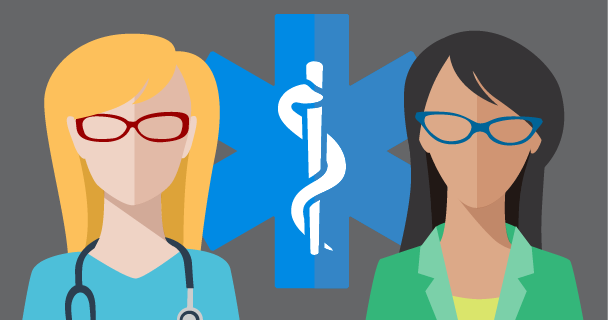blog


“How sad!” you say when you hear about an overdose death in the news or attend the funeral of the child of a friend of yours. You may know someone close to you, or worse yet, in your immediate family, who is struggling with opioid use disorder, and again, you say to yourself, “How sad… so sad” and maybe even ask yourself, “What more can I do?”
This prolific problem is wrought with sadness, fear, and despair. It’s out of control and touches every neighborhood, every age group, and every socio-economic level. It has no mercy.
The fact is that deaths from opioid analgesics, including heroin and illicit synthetic opioids, totaled around 135 deaths per day in 2017 in the United States alone. It has been declared a national public emergency.
How did this happen?
We concede that pharmaceutical companies overemphasized pain relief benefits and understated addictive effects during their marketing campaigns. Prescribers jumped on board to nobly keep their patients out of pain, because they believe that if patients take opioids for pain reasons, they won’t become addicted. Recognizing now that this is not true, opioid prescriptions have declined over the past several years, but deaths from opioids have not.
The most common drugs involved in prescription opioid overdose and death include oxycodone (Oxycontin®) and hydrocodone (Vicodin®). Misuse can begin to evolve when more than needed is prescribed. Patients can become tolerant to opioids in as soon as 7 days of initiation of treatment. When the physical and emotional need exceeds availability of the drug, people may turn to heroin use. Black market costs for pills are high, so users resort to heroin, now with added fentanyl, which is much cheaper and more available on the streets. Suddenly, as abruptly as falling into an abyss, a kid who professed to never use IV drugs is now controlled by them.
Healthcare Tells Us How to Combat the Opioid Abuse Epidemic
Like for any emergent disease, as healthcare professionals, we do what we know to do. Prevent the disease from ever happening and use evidence-based practices to treat those affected. Given the enormity of the problem, we conclude it will take a long time and great effort to effect change.
Certainly, prescribing less and doing so more appropriately will help to diminish the drug supply on the street, as will proper storage and disposal of leftover drugs in homes. Healthcare providers must also ensure that medication-assisted treatment (MAT) is prescribed because it is the most effective known intervention for long term recovery from opioid use disorder (OUD). Unfortunately, it is not the most widely used treatment. In fact, those on MAT are often scorned and not accepted into some treatment programs.
MAT combines one of three Food and Drug Administration (FDA) approved medications (methadone, buprenorphine, and naltrexone) with behavioral therapy for preventing relapse and for maintenance treatment of OUD.
Making an Impact
The experts say, prevention in the first place, increased screening and diagnosis of opioid use disorder, and improved access to and use of MAT are critical to making a positive impact on the opioid epidemic. Can we, as healthcare professionals, do more though? Where does prevention really begin?
Teenagers and young adults are not the only victims, however. Adults, even those over 60 years of age, are innocently taking oxycodone or hydrocodone for chronic pain. They may take more and more until they get the relief they need, then drift off into a sleep from which they will never awaken. One in four patients receiving long-term opioid therapy struggles with addiction; yet, efforts to manage chronic pain with opioids are often ineffective, underlining the need to implement other measures, such as physical therapy, acupuncture, weight loss, or nerve blocks.
The Complexity of Pain Treatment
Long-term opioid use often begins with treatment of acute pain, emphasizing the need to include non-opioid treatment options into the plan of care early on. When initiating pain treatment, it is important to consider and address all issues which may affect pain persistence, such as lack of support during recovery, work-related pressures, or co-morbid mental illness such as depression or bi-polar disease. Effective discussions must occur which are person-centered and focused on quality of life. These discussions take time and should include an exploration of a person’s functional and social goals, so that individuals can choose the best course of care to achieve them.
Prevention for those who never misused and medication for those affected is best practice, but some, adolescents and adults both, speak of pain that is not physical in nature and take opioids solely for its euphoric effects. Ensuring that all people get the emotional and social help they need from early on is a task that goes beyond our established prevention measures. It calls for parents and neighbors to help each other, schools and churches to foster healthy relationships and habits, and expanded resources to support mental health in our country.
Suggestions to Create Lasting Change
What more can we do? Act as we ponder some options presented here, that might just impact lasting change.
HealthStream’s learning management system and healthcare training solutions support medical training initiatives and allow for the best patient care.
View All Learning & PerformanceExpand the decision-making skills and effectiveness of your healthcare workforce with HealthStream's workforce development programs and services.
View All Clinical DevelopmentComprehensive, industry-leading provider onboarding and credentialing software that validates health outcomes and supports provider assessment.
View All CredentialingMake sure your healthcare staff can schedule out appointments and work schedules with ease using our line of nurse scheduling software solutions.
View All SchedulingWhen you enact HealthStream's quality compliance solutions, you can do so with the confidence your healthcare organization will meet all standards of care.
View All Quality & ComplianceTransform end-to-end revenue cycle management with comprehensive education
View All Revenue Cycle EducationLearn about our advanced resuscitation training solutions. Our solutions are designed to help improve patient outcomes.
View All Resuscitation